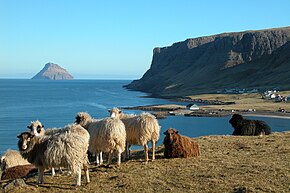Ecological stoichiometry
These earlier concepts have been extended to explicitly link the elemental physiology of organisms to their food web interactions and ecosystem function.
This interface, whether it is between plants and their nutrient resources or large herbivores and grasses, is often characterized by dramatic differences in the elemental composition of each part.
Photoautotrophic organisms, such as algae and vascular plants, can exhibit a very wide range of physiological plasticity in elemental composition and thus have relatively weak stoichiometric homeostasis.
For instance, in aquatic ecosystems, nitrogen and phosphorus pollution within streams, often due to agricultural activities, can increase the amount of N and P available to primary producers.
[10] This change in primary production can trickle through the food web via bottom-up processes and impact the stoichiometry of organisms, limiting elements, and biogeochemical cycling of streams.
[11][12] During early growth stages, or earlier instars, invertebrates may have higher demands for N and P enriched resources to fuel the ribosomal production of proteins and RNA.
